15.pdf




March 12, 2013 • Page 15
Shop online at www.missourivalleyshopper.com
Growing Asparagus and Rhubarb this Spring
After a long winter with no
fresh home-grown vegetables
many gardeners really look
forward to that first spring
harvest of asparagus and
rhubarb, says David Graper
SDSU
Extension
Horticulturist and Director
of McCrory Gardens.
"These popular vegetables
are actually perennials that
come back year after year to
provide a bounty of delicious
and nutritious food for main
meals and desserts," Graper
said. "Many asparagus
fanciers take to scouring the
road ditches and fence lines
for these delectable spring
shoots while others chose to
establish a patch in their own
gardens."
Graper says the best way to
start an asparagus bed is to
begin preparation in the fall
before the spring you want to
plant.
First, kill off all of the weeds
with repeated cultivation or
an application of glyphosate
herbicide. He says this can
also be done in the spring,
but it won't be as easy to get
the tough perennial weeds
controlled.
"Weeds are the biggest
problems for asparagus
growers so get them taken
care of before you begin," he
said.
Then, in early spring, order
fresh 1-year old seedling
crowns of the variety you
want to plant. It is best to
always buy seedling crowns
rather than to try to dig up
plants from a friend or a
ditch, they transplant better
and you can select an allmale variety which is usually
more productive.
Plant by first digging a trench
about a foot deep and 8- to
10-inches wide. Place the
crowns in the center of the
trench - about 18-inches
apart and cover with about
3-inches of soil.
Small, new shoots will soon
begin to grow. As the new
shoots develop, Graper says
gardeners can gradually fill in
the trench, adding another
inch or two of soil every few
weeks, until you have the
trench completely filled up.
Allow the new shoots to grow
all season without harvesting
for the first two years.
Only cut them back to the
ground after they have been
killed by a hard freeze in the
fall. It's a good idea to cover
the row with a good 3- to 4inch layer of organic mulch
each fall. Shredded leaves and
grass clippings work well.
"The mulch will also help
reduce weed growth in the
patch," Graper said.
By the third year, he says
the asparagus should be getting pretty well established
and should be healthy
enough to take a couple har-
vests of the shoots, but then
let them grow up and remain
until the end of the season
again.
In the fourth year, gardeners should be able to harvest
for about six weeks. But, stop
harvesting if you notice that
the size of the shoots is getting smaller, down to the size
of a pencil.
Growing Rhubarb
Rhubarb is also best planted in the spring in a clean,
weed free area. It needs full
sun and a well-drained soil.
Most people will plant using
crown divisions that they
purchase from a nursery but,
Graper says gardeners can
also get a division from a
friend.
Work the soil well before
planting.
Incorporating
some compost or well-rotted
manure can also help get
your plants off to a good
start. Dig a large enough hole
to easily accommodate the
transplant covering the buds
with a couple inches of soil.
Rhubarb can also be planted
from seed in the spring but
there are more varieties with
the nice red colored petioles
or stalks available as trans-
plants than from seed. Also,
Graper adds that seed-grown
plants tend to produce more
seed stalks than the vegetatively produced plants.
Once again, it is best to not
harvest anything from your
rhubarb for the first two
years. In year three, you can
harvest a few of the stalks but
leave the rest to mature and
continue to build up the
plants.
When harvesting, Graper
encourages gardeners to
grasp the leaf stalks close to
the ground and give a firm
tug to harvest them from the
plant. Cut off the large leaf
blade and add those to the
compost pile which will leave
the edible petiole. If seed
stalks develop, cut them off
close to the base of the plant.
Allowing them to develop
will take some energy from
the plant so it is best to
remove them.
Weed control
Weeds are the biggest problem with growing these
perennial crops. Graper says
gardeners can hoe or till right
over an established asparagus
patch in the spring before the
Get more
MUSCLE
Regions with significant rainfall
for your money with a classified ad!
SHOPPER
MISSOURI VALLEY
"April showers bring May
flowers" is a phrase
uttered in households
across the country every
spring. However, thanks
to some well-chronicled
changes to weather patterns, the weather is no
longer so predictable.
Abnormally warm winters and dry summers
have become commonplace, while spring and
fall have undergone
changes as well.
Although weather patterns vary, the spring season still tends to be one
of the wetter times of
year. Some people experience day after day of wet
weather, likely wondering
if their region gets more
rainfall than other areas.
While some areas of the
world are synonymous
with rainfall, areas that
tend to soak solely in
spring are likely not
among
the
rainiest
locales on the planet.
In terms of wettest
weather in the world, two
areas of India take the
cake. Cherrapunji and
Meghalaya, India receive
on average 1,270 centimeters, or 496 inches, of
rain each year. That's
about 41 feet of rain,
making these regions the
wettest places on Earth.
In the United States, the
Hawaiian
island
of
Kaua'i,
particularly
Mount Waialeale on the
island, receives the most
rain per year at roughly
460 inches. Kaua'i is
known as "The Garden
Island" for its lush vegetation. Waialeale means
"overflowing water" in
Hawaiian, which is apt
for the amount of rain
the region receives.
new shoots start to grow. Or,
one can carefully apply
glyphosate herbicide to
perennial weeds before new
shoots emerge in the spring
too.
"But do not get the spray on
any asparagus shoots as this
can severely damage the
plants," he said.
A good layer of mulch and
keeping a clean border
around the plants is the best
way to avoid weed problems.
Do not use salt to kill weeds.
While this may kill the weeds
it is also damaging to the
asparagus.
Both asparagus and
rhubarb will benefit from a
yearly application of fertilizer
after harvest is complete.
Gardeners can use a typical
garden fertilizer like 10-1010 applying about a cup per
10-foot of row and scratching this into the soil or you
can use compost or well-rotted manure, applying it an
inch or two thick over and
around the plants. But be
aware that you might be
introducing weed seeds to
your patch which will mean
more weeding later.
While Mount Waialeale
is the most rain-soaked
place in the United
States, several other areas
receive plenty of rain as
well.
*Little Port Walter,
Alaska: This area on
Baranof
Island
in
America's largest state
annually receives about
225 inches of rainfall.
*Quinault Ranger
Station,
Washington:
Located in a temperate
rainforest, this spot
receives an average of 137
inches of rainfall a year.
*Valsetz, Oregon:
Though
this
town's
industry shut down when
the
Boise
Cascade
Company closed timber
operations in the area, it
still gets 128 inches of
rain each year.
*Honeydew, California:
A small town in Northern
California,
Honeydew
gets about 104 inches of
rain per year.
319 Walnut St., Yankton, SD
605-665-5884
605-665-5884
“Don’t Gamble” - Insure With
M.T. & R.C. SMITH
INSURANCE
Too
many
mouths
to feed?
Serving the Yankton Area Since 1949
...With Excellent Insurance Companies That We Representt
HOME, AUTO, BUSINESS, LIFE, BONDS
209 W. 4th St. • Downtown Yankton, SD
605-665-3611
Place an ad
in the
Missouri
Valley
Shopper
today!
Resid en tia l
Co m m ercia l
Ag B u ild in gs
SteelB u ild in gs
Forget the rest... ride with the best!
Y
ANKTON
M
OTORSPORTS
Free Estim a tes
605-665-9012
toll free 1-877-ferdigs (337-3447)
4306 W. 8th St. • Yankton, SD • 605.665.3500 • www.yanktonmotorsports.com
220 East 3rd St., Yankton, SD 57078
www.ferdigstransmission.com
For Quality
W ork Call...
D a lla s K eller
605 .661.375 9






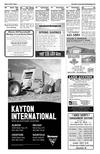

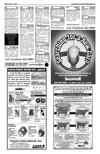

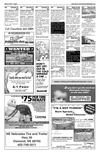

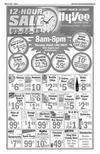
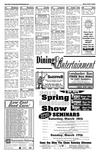
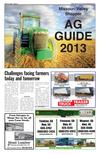



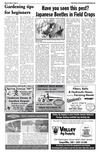
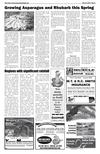





 Previous Page
Previous Page





